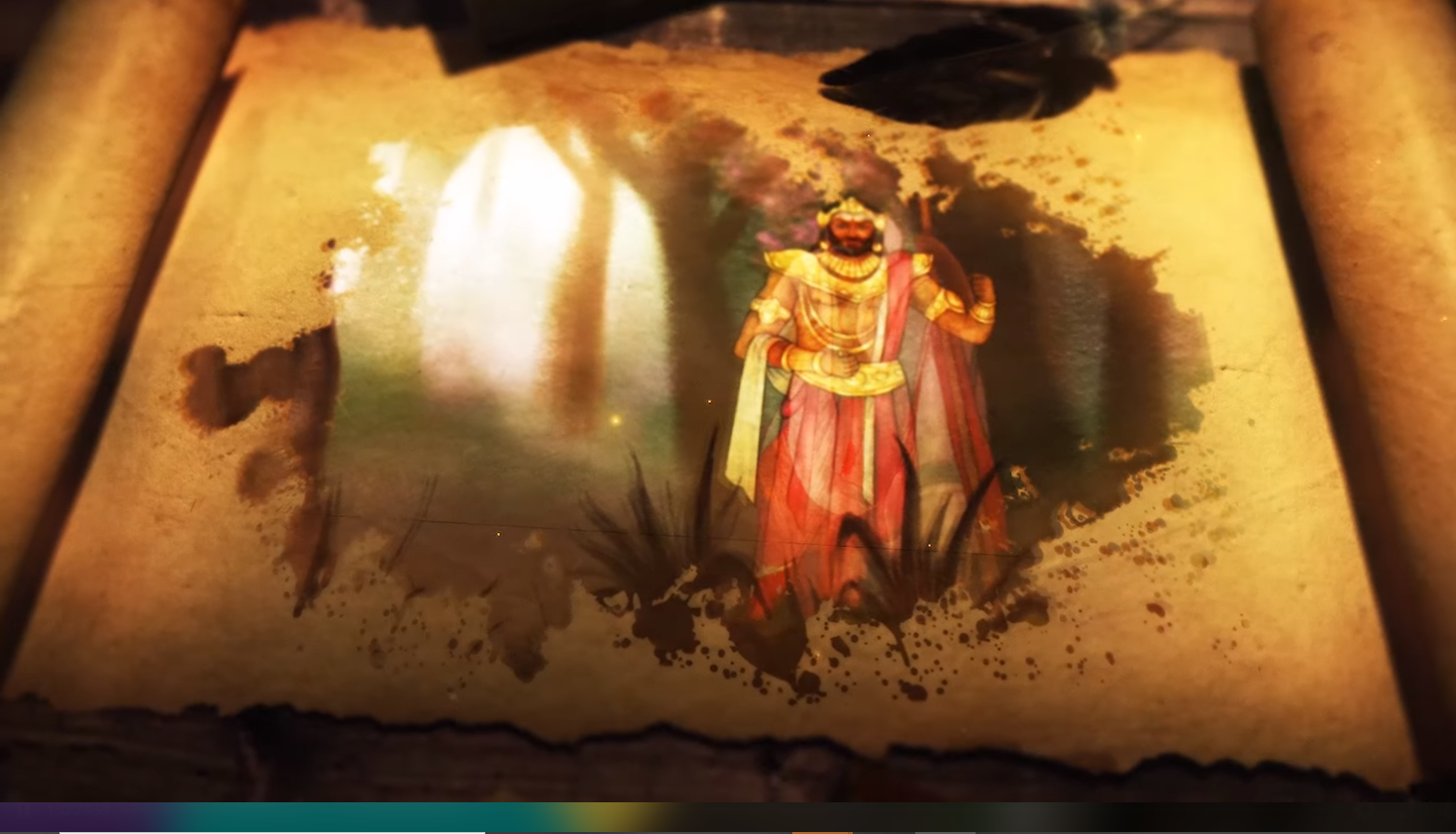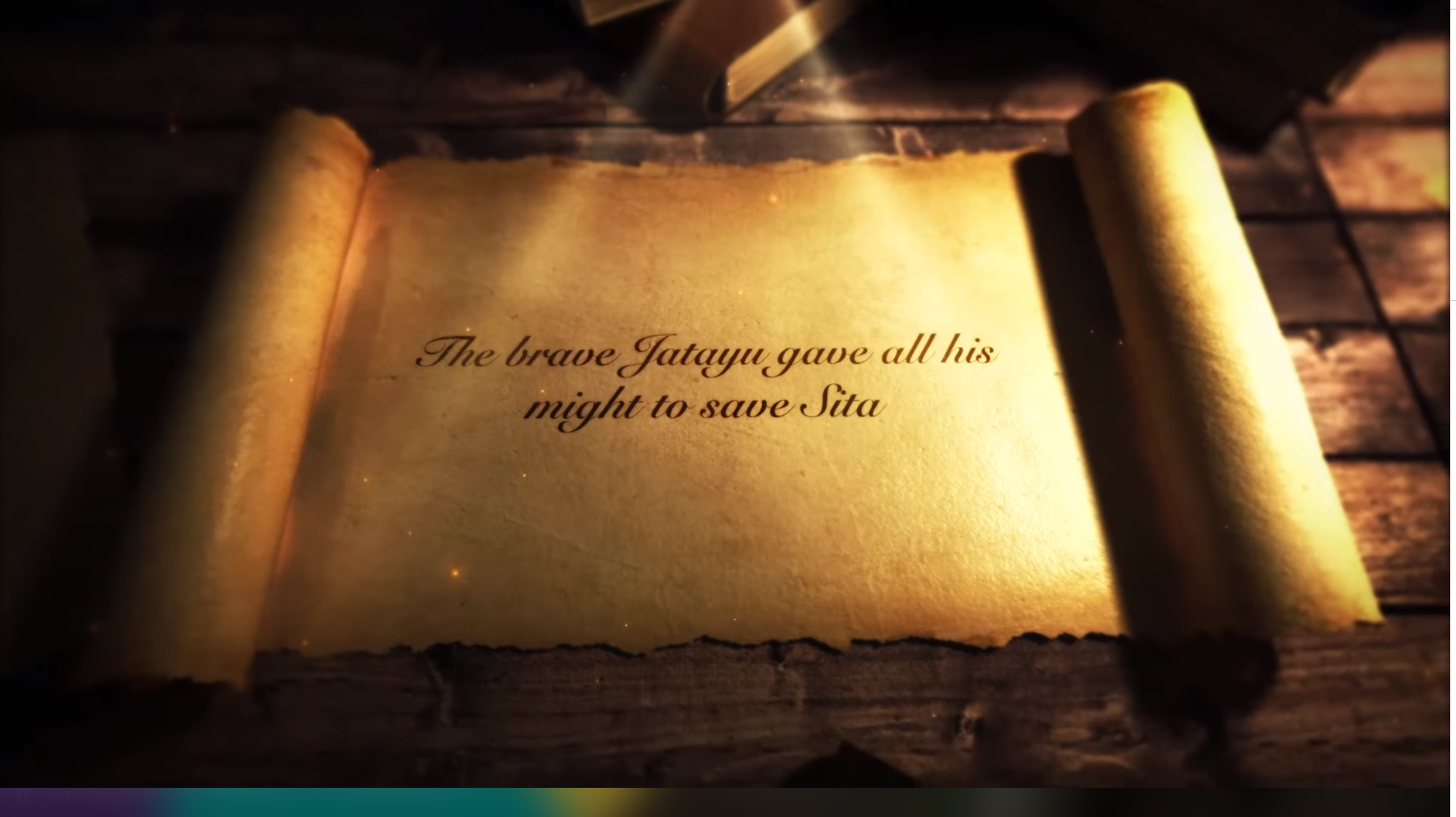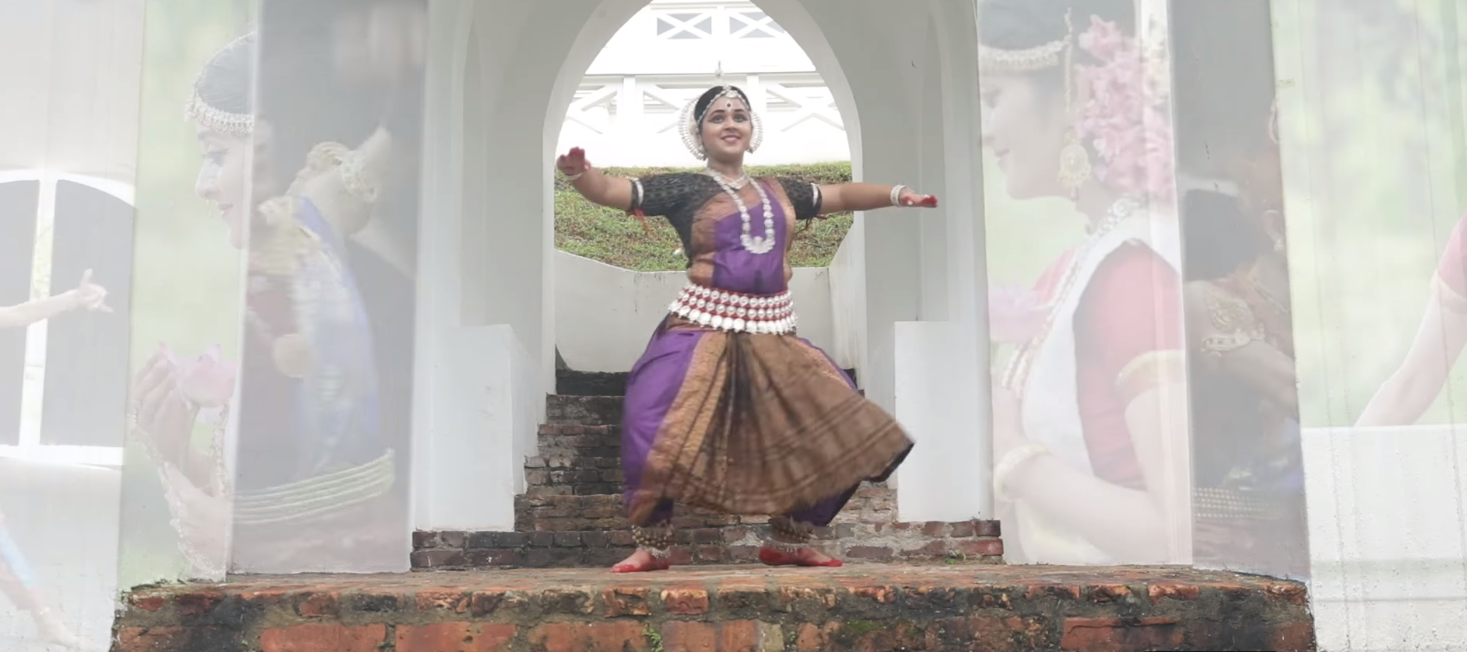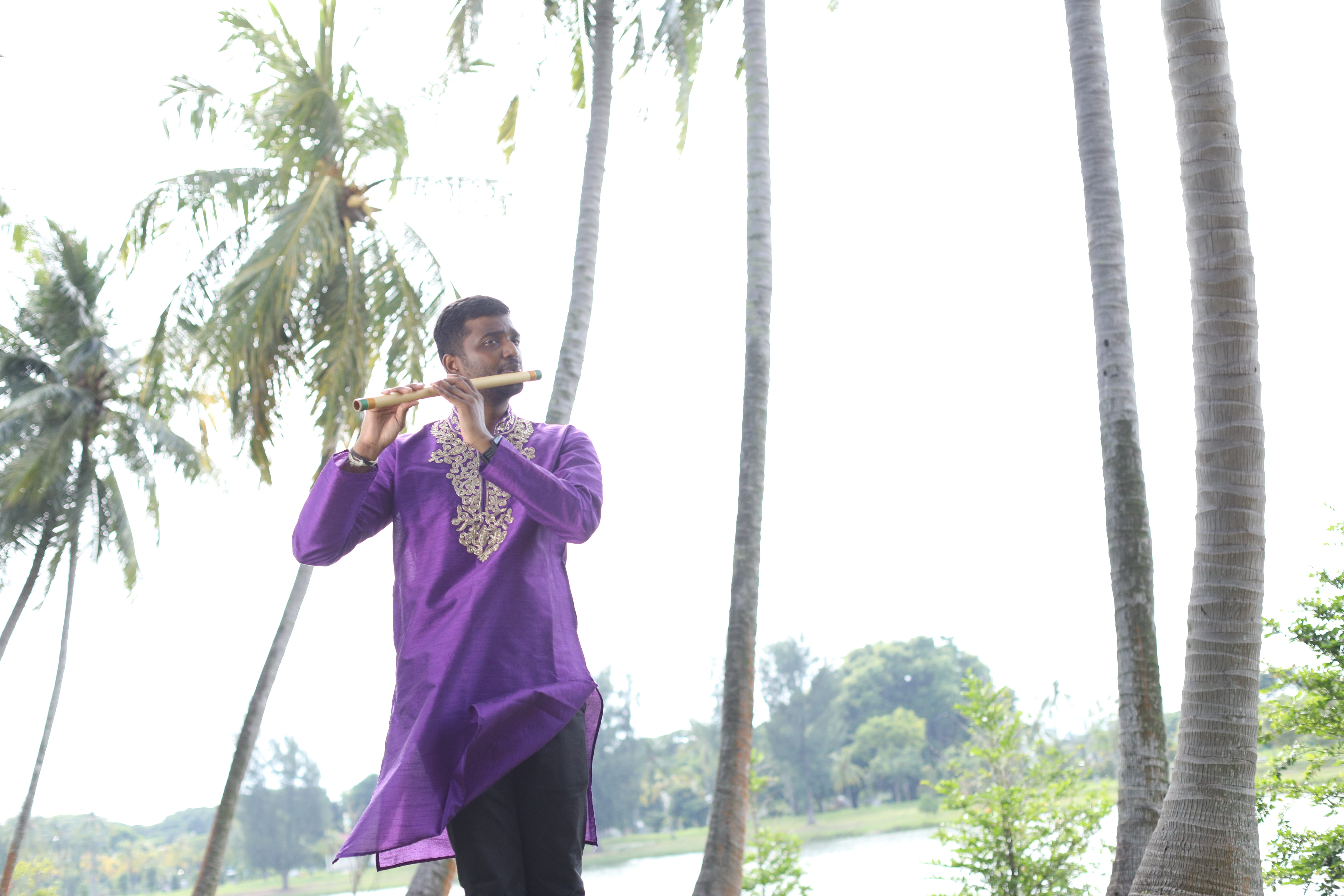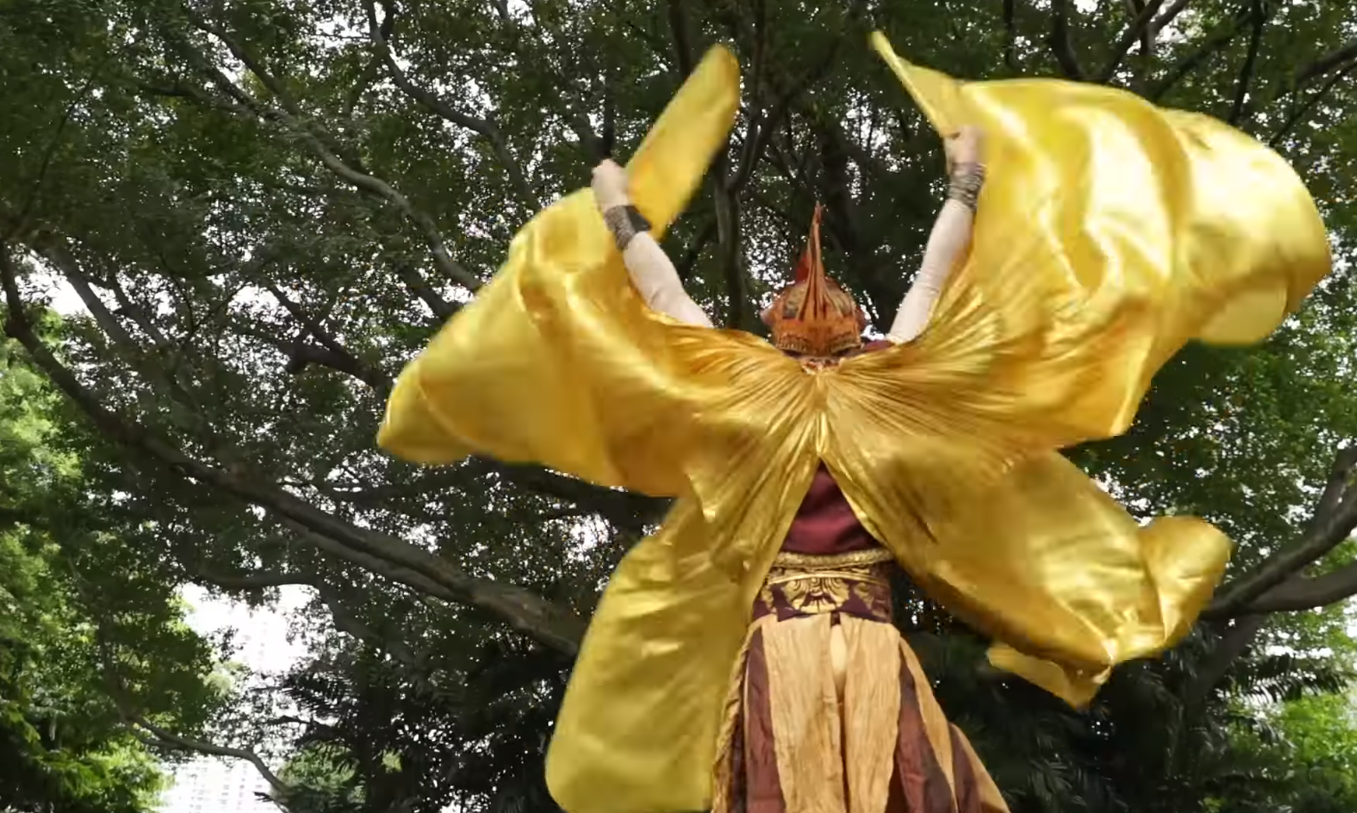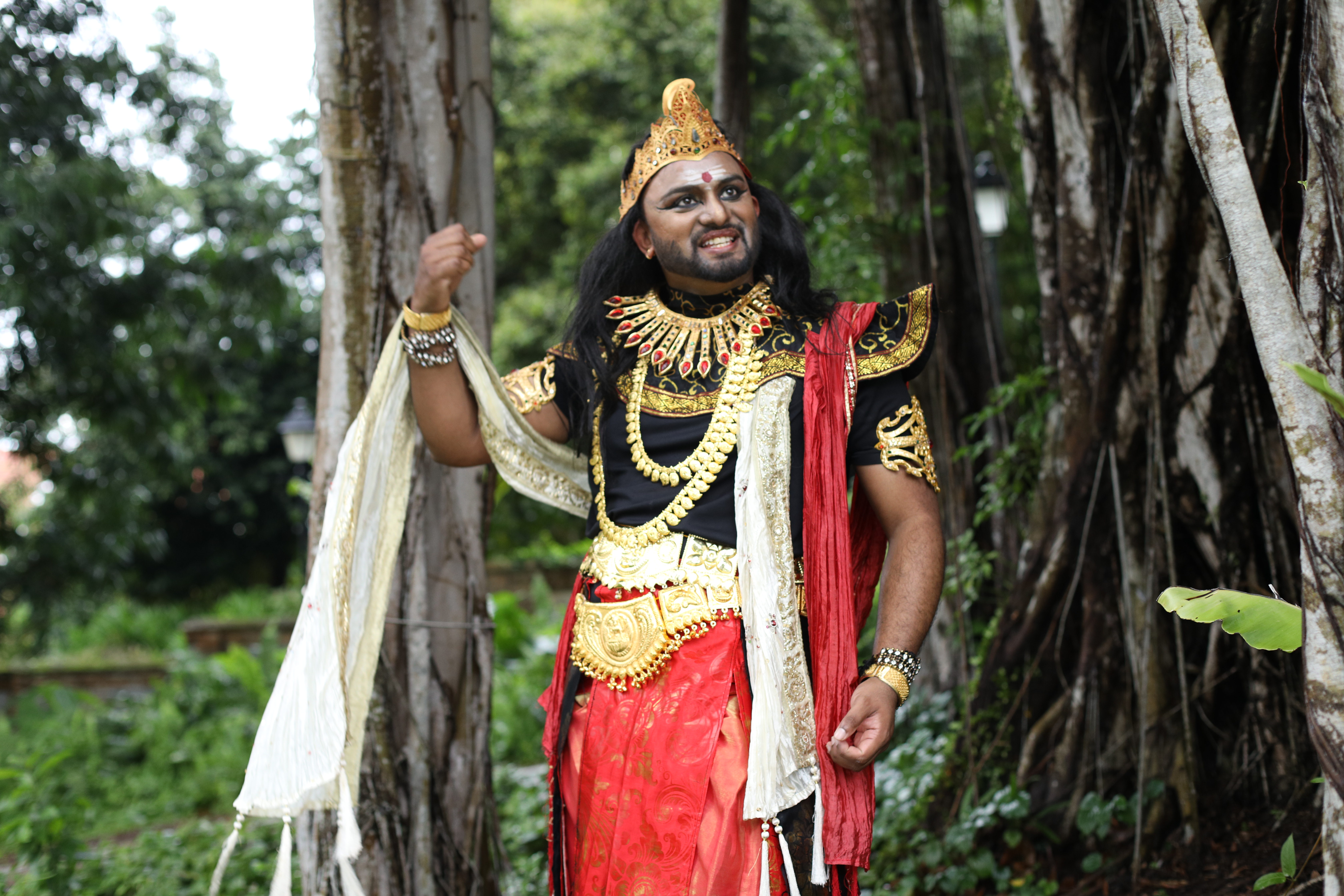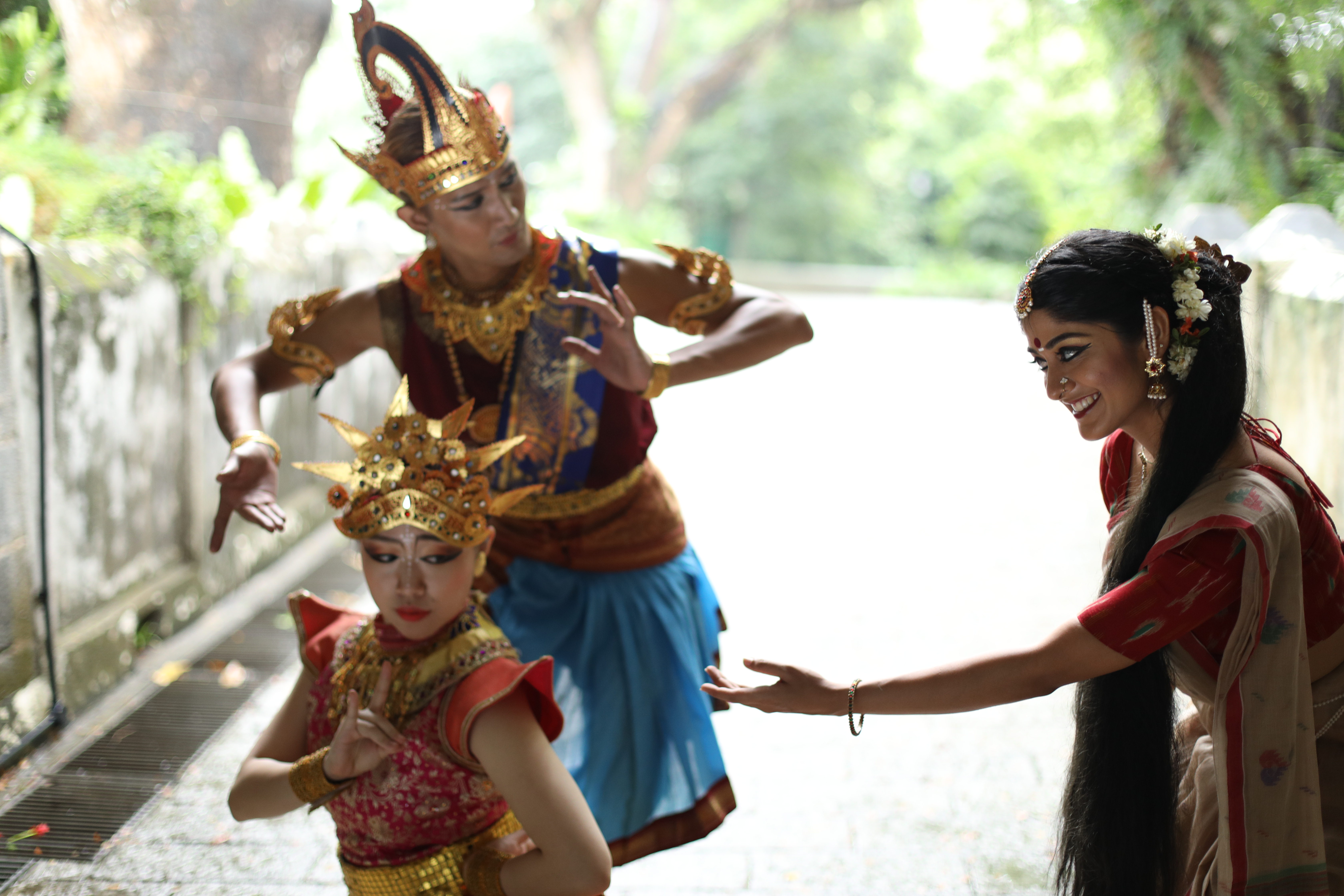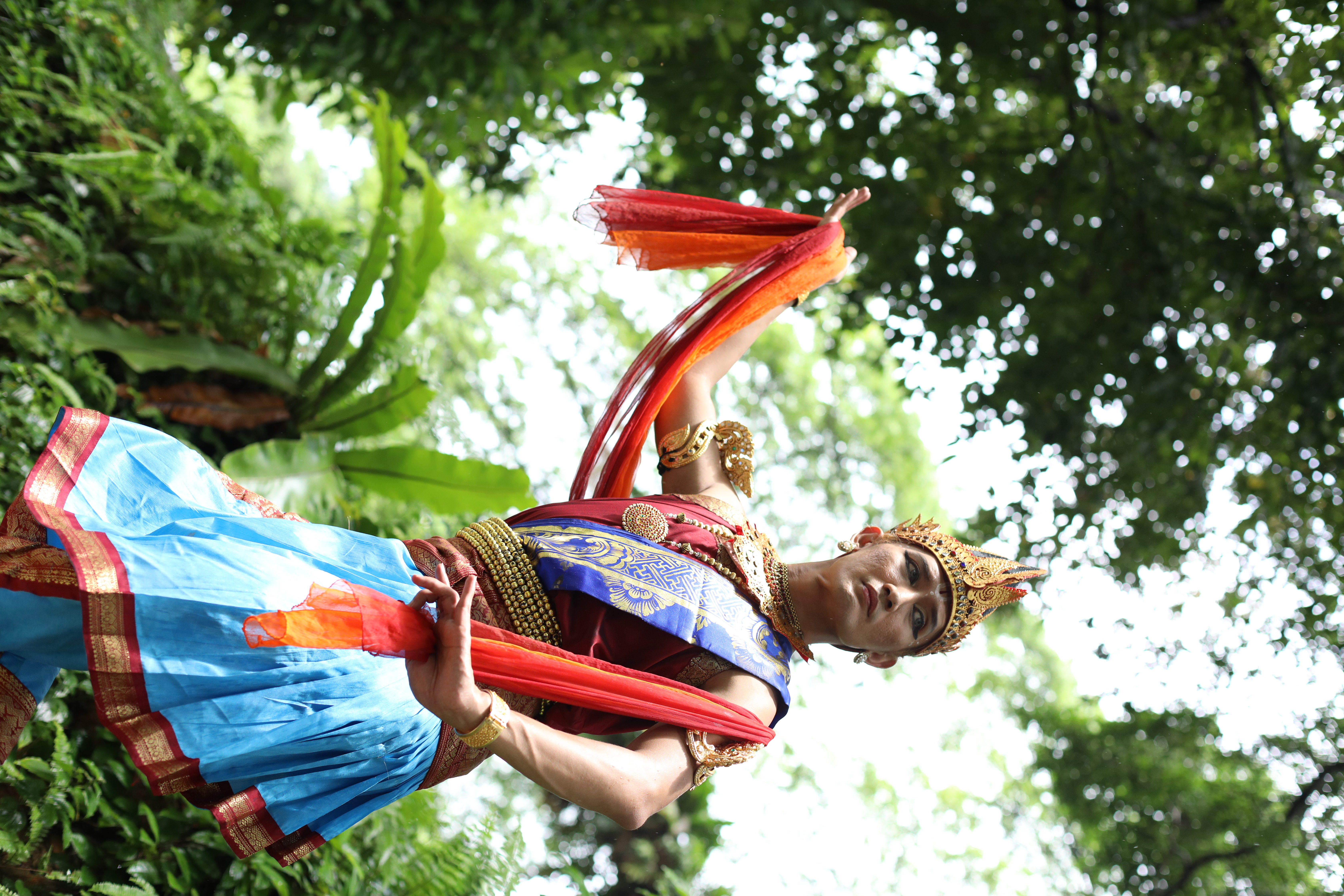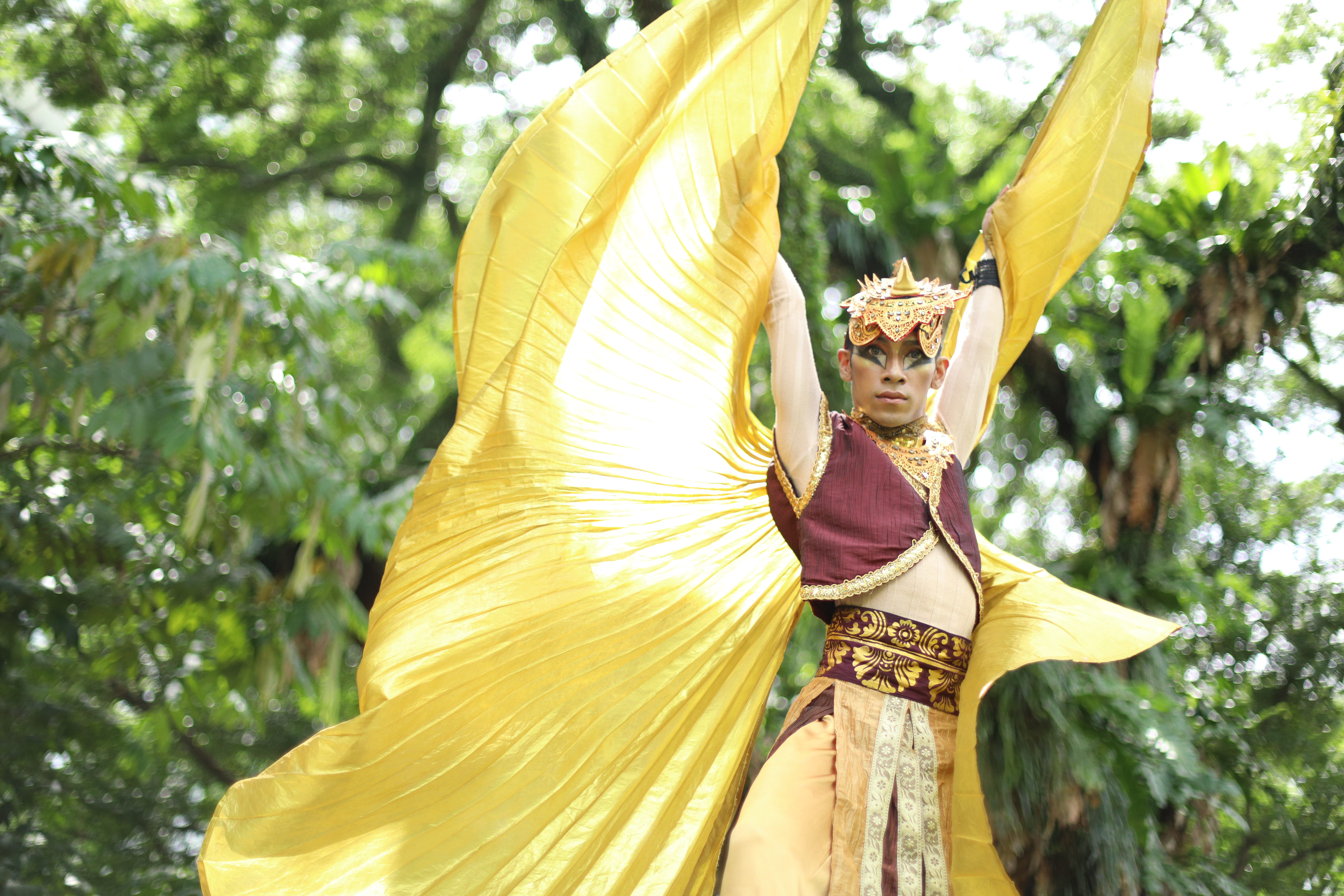The Indian Heritage Centre’s CultureFest 2020 kicked off with its first-ever digital launch on September 5 followed by an eclectic line-up of programmes from September 5-20.
Also watch: Indian arts through the lens of Ramayana: A sneak peek of CultureFest 2020
The second weekend of the IHC CultureFest brought to audiences Maya Dance Theatre‘s 2-part dance drama series – Ramayana, The Journey Begins, Chapter 1 and Chapter 2.
Connected to India spoke with Kavitha Krishnan, co-founder, Artistic Director and Resident Choreographer at the Maya Dance Theatre to learn more about the institution as well as its production for IHC CultureFest.
Maya Dance Theatre (MDT)
Established in 2007 MDT was founded by Kavitha and Imran Manaff, who serves as creative producer and company manager.
A trained Bharatanatyam dancer, Kavitha has represented Singapore internationally.
“Maya’s distinctive expression is grounded in the visceral nature of the human spirit,” says Kavitha.
Using a hybrid language of expression, steeped in Asian dance training philosophy, the Indian classical dance form of Bharatanatyam and contemporary dance, MDT works in collaboration with diverse partners to tell social stories that are compelling and relevant with artistic integrity.
Performance at IHC CultureFest 2020
Ramayana, the Journey Begins is an interdisciplinary creative collaboration that brings together different elements: storytelling, illustrations, film, dramatization, dance and music to give an introduction to the Asian epic – Ramayana.
It walks the audience through the plot of the story from the perspective of Ravana, the ten-headed King of Lanka.
“I am indeed blessed to have worked with a good team of creatives who collaborated with myself and Maya Dance Theatre for this project. We have worked from April this year; and my journey continues, as I discover new moments with the Ramayana”, says Kavitha.
Watching the series, it will barely be noticed that never are the characters together, except in one scene between Sita, Rama and Maricha, where there is a three-person choreographic composition.
All the other scenes have been filmed in solo dance frames. What brings the story forward and binds all the characters together, despite their solo choreographies is an illustrated book.
The Illustrations
Illustrations by emerging artist, Vimal Kumar weave the narratives beautifully.
“I illustrated them digitally on a Samsung tablet using digital brushes that mimic pencil and have crayon-like textures, so that it has a very hand drawn feel to it, an aesthetic that I am personally drawn to,” Kumar tells Connected to India.
He adds that while he has done a lot of religious and cultural art for clients and as personal projects, “This is the first time I got to make illustrations for a complete series of this manner, which is also a wonderful collaboration of performance and visual artists. Researching on the characters to depict each scene, gave me a renewed love for this everlasting classic.”
The Choreography
The choreography for Ramayana, The Journey Begins has a hybrid language of expression drawn from Asian and contemporary dance forms such as Bharatanatyam, modern dance forms such as Jazz and Hip Hop as well as the classical dance of Java.
Each of the inter-cultural dancers brought their own unique perspective of the character to the screen.
“I also wanted the scenes to be as close to ‘real’ as possible and opted to film the scenes outdoors. And it was quite a challenge really during Phase 2 of the Circuit Break,” says Kavitha.
The Music
Music composer/flautist Raghaveendra Rajasekaren says that he enjoys listening to stories of Lord Hanuman’s dedication and loyalty to Lord Rama.
“I was deeply inspired by my visit in December 2019 to Sri Ranganathaswamy Temple where we sat and performed at the sanctum where Kambar’s Ramayana was first staged!” he explains.
“Raghaveendra Rajasekaren’s music composition has given me wider scope to explore nuances in the choreography with the dancers”, adds Kavitha.
The Creative Direction
The creative direction to pan the work from the lens of Ravana was a spark ignited by creative director and filmmaker Yahssir M from Millenia Motion Pictures.
“Yahssir has been working with Maya Dance Theatre and myself for more than 10 years and this creative relationship has offered itself to the creation of this work, Ramayana, The Journey Begins”, says Kavitha.
The costumes and accessories for the characters were also designed to retain the essence of Asian influence, which was pivotal for this work.
The Characters
The artists playing the various characters are multi-racial Singaporean artistes.
Does Ramayana’s interpretation vary across the South East Asian races? Let’s find out from the artists themselves.
Akshara Thiru as Ravana
Ravana is the character this journey starts out with. Akshara Thiru is a percussion artist who created the sounds for the emergence of Ravana. He then continued his interesting journey by embodying the character himself.
“It is the first time for Akshara Thiru (who is a percussionist) to work with us in the production as an actor instead of a musician,”, says Kavitha.
The inspiration to create Ravana and the sound for the character came from Thiru’s understanding of the Lankan king which grew deeper as he “Focused less on what people said about him and tried to see him for who he really was”.
“I grew up reading about Ramayana and focused a lot on Hanuman in my teens. However as I worked on Ravana in a few projects, my understanding for him has grown deeper”, Thiru adds.
Ravana’s knowledge, talent and sheer arrogance inspired Thiru and he wanted that to be portrayed in the sounds as well as in his character. He also had to work the angles and see things from the point of the lens while performing for the camera.
Shahrin Johry as Rama
Shahrin got involved in the Ramayana story for the first time when he was in Secondary 3 (about 15 years old) while on an exchange programme to Bali, Indonesia for a cultural study.
“From then I have been playing Rama and I am certain that his character has grown into me so much that today it feels so natural to be playing him”, says Shahrin.
The storytelling was framed using abhinaya and nritta to express Rama’s character through Bharatanatyam.
The scene portrayed was set in the palace where Rama saw Sita for the first time and stole her heart by breaking the bow.
“Usually, I play Rama from start to end for a stage dance-theatre work. However this time it was only for one episode and for a camera lens instead of the audience,” Shahrin says.
This production in particular took quite some dedication on his part with Shahrin having to bear the heat while dancing outdoors in a thick, heavily adorned costume with several takes and with ants biting his feet!
Varsha as Sita
Varsha has grown up listening to the Ramayana as a story of good winning over evil.
“But with time, the depth of the characters, their ideologies and motives have grown to interest me and it’s no longer a black/white epic”, she notes.
“Sita is someone who has time and again come to me, each time bringing in a new dimension. It is always interesting to see how the character changes and grows with time”, Varsha adds.
Kavitha showed her a different perspective of Sita, but at the same time gave Varsha the rope to explore and interpret her, resulting in the creation of a different dimension of Sita.
While filming outdoors, given the weather conditions and locations, Varsha had to modify and adapt what was rehearsed in the studio to the surrounding.
“It was a challenge but gave an extra dimension and flavour to the mood of the character and I thoroughly enjoyed the process,” concludes Varsha.
Subastian Tan as Hanuman
Before this project, Sebastian Tan was exposed to Ramayana stories through videos and text.
But as a performer embodying Hanuman, “I felt like I could immerse myself into the world of this epic story and understand the characters and the nuances of the story better,” he says.
“As I was portraying the scene where Hanuman meets Sita in Ravana’s palace, we started by working on the characterization of Sita to understand her emotional journey,” says Subastian.
“Thereafter as Hanuman, I was able to react to a clearly imagined Sita which made the creation more real and immersive”, he adds.
“As we filmed in an outdoor space, the unpredictable elements made it a challenge – however, recognising and acknowledging the spaces we danced in as well as our characters added to the portrayal”, concludes Subastian.
Eva Tey as Maricha, the golden deer
Eva was aware of the story of Ramayana prior to this project. However portraying Maricha was refreshing and exciting for her. She researched the character and then brought him out from her point of view.
The duality of the character which was a demon or Rakshasa as golden deer was challenging, as “I had to negotiate sweetness and yet display cunningness,” says Eva.
It was challenging not just shooting outdoors but also performing for the camera instead of an audience. “We were used to performing for a live audience, whereas here I had to focus my eyes appropriately in order to bring attention to the lens,” concludes Eva.
Mohd Sharul as Jatayu
“Prior to the project, I just knew Hindu Gods as statues at temples. I became aware of the love and the war stories involved only after playing the role of Jetayu,” says Mohd Sharul.
Working with Kavitha, Sharul uniquely identified the movements for this mystical bird through his Malay dance practice.
The outdoor weather’s vagaries and the painful ant bites were sacrifices that were worth it for the arts, he feels.
However due to social distancing measures, most shots were filmed solo. “So we had to imagine the positions of the other characters in the space and it determined my eye line for the filming”, says Sharul.
Constant direction cues on where to look were given during the shoot. “As I was using the camera lens as Ravana during my battle with him,” Sharul says.
Watch Maya Dance Theatre’s Ramayana, The Journey Begins Chapter 1 here.
Watch Maya Dance Theatre’s Ramayana, The Journey Begins Chapter 2 here.
Follow the interesting workshops and performances revolving around the epic Indian literary work – The Ramayana and get your daily dose of culture on the IHC CultureFest 2020 at IHC’s Facebook page.


